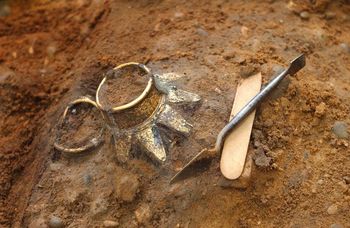ADS-easy Costing Calculator
The ADS Costing Calculator allows you to estimate costs for the deposition of your dataset via ADS-easy, so that you can add this information to your tender, project design or grant application. You can also ‘download this estimate’ and keep it for future reference.
Please be aware that:
- There are limitations in the file formats and file sizes that the ADS-easy system can accept and the Costing Calculator will only provide costings for datasets that can be submitted by ADS-easy.
- For large datasets or to deposit complex data formats not accepted by ADS-easy please contact the ADS directly to obtain a quotation.
- All Costing Calculator estimates are current for the financial year in which they are calculated (April – March), i.e. an estimate made in January will only be valid until the end of March. Should you require an estimate for work that exceeds this limit then please contact us.
- All estimates created using the Costing Calculator are intended as a guide to what you should budget for, but are not intended to be a statement of actual costs. This is simply because the data you envisage creating may vary from what you actually submit at the end of your project. When project data has been submitted via ADS-easy, the interface provides a running cost of the archive and a ‘final statement’ can be downloaded once the deposit has been submitted.
How to create an estimate
Charging for a deposit via ADS-easy is based on an initial start-up fee, with additional charges made for each file that is included in the archive.
To add files to your costing use the drop-down menus:
- Select the appropriate data type.
- Select a file extension*.
- Add the quantity of files to be deposited.
- Click ‘Add’ to add the cost of those files to the quotation.
* Some file extensions may appear in more than one data type. Make sure you have chosen the right data type.
If your archive includes geophysical data:
- Select the geophysics data type.
- Enter the survey size expressed in hectares.
- Click ‘Add’ to add the cost of the survey to the quotation.
A list of your estimated archive contents will appear on screen and a running total for the cost of deposition will appear beneath.
To remove files from the costing click the ‘x’ button under ‘Remove’.
Once complete you can download a PDF version of your quotation or you own records by clicking the ‘download estimate’ button.
Costing Calculator FAQs
The start-up fee covers a proportion of the cost of management and administration, ingest and the creation of a basic interface for the dissemination of your dataset. All charges are outlined in the charging policy. All deposits through the ADS-easy are charged the same start-up fee.
We would urge you to request a bespoke costing by contacting us directly for more information.
Unfortunately, because of limitations in terms of file size or data complexity, not all data types are depositable through ADS-easy. These more complex data types are still accepted by the ADS, but require deposition through an external data transfer or the exchange of physical media. Please contact us for more information.
In the first instance consult the ADS Instructions for Depositors and specifically the list of accepted file formats to make sure that the ADS accepts your file. If the file is listed here, but is not part of the Costing Calculator, then please contact us for more information and a bespoke quotation.
The simple answer is complexity. While some files are relatively ‘easy’ to manage, others require more complicated and time consuming methods in order to guarantee their preservation in perpetuity. The reason for this is that it takes a lot more time to check, document and preserve a shapefile (with its several constituent parts) over an image or .csv file. Experience has taught us that the only circumstance where we can really benefit from economies of scale is when dealing with image files and that too is taken into consideration within the charging model – a small discount is given as the numbers increase.
We will raise an invoice at the point when the archive is completed and ready for release, or where a collection is embargoed, at the point we send you a link to the archive. If you need us to cite a Purchase Order Number for invoicing purposes, please include this number during the submission process.
No. Estimates created using the Costing Calculator are not recorded. Should you wish to retain the costing information then you can download a PDF version using the ‘download estimate’ button. N.B. Please note the restrictions on estimates noted above.



